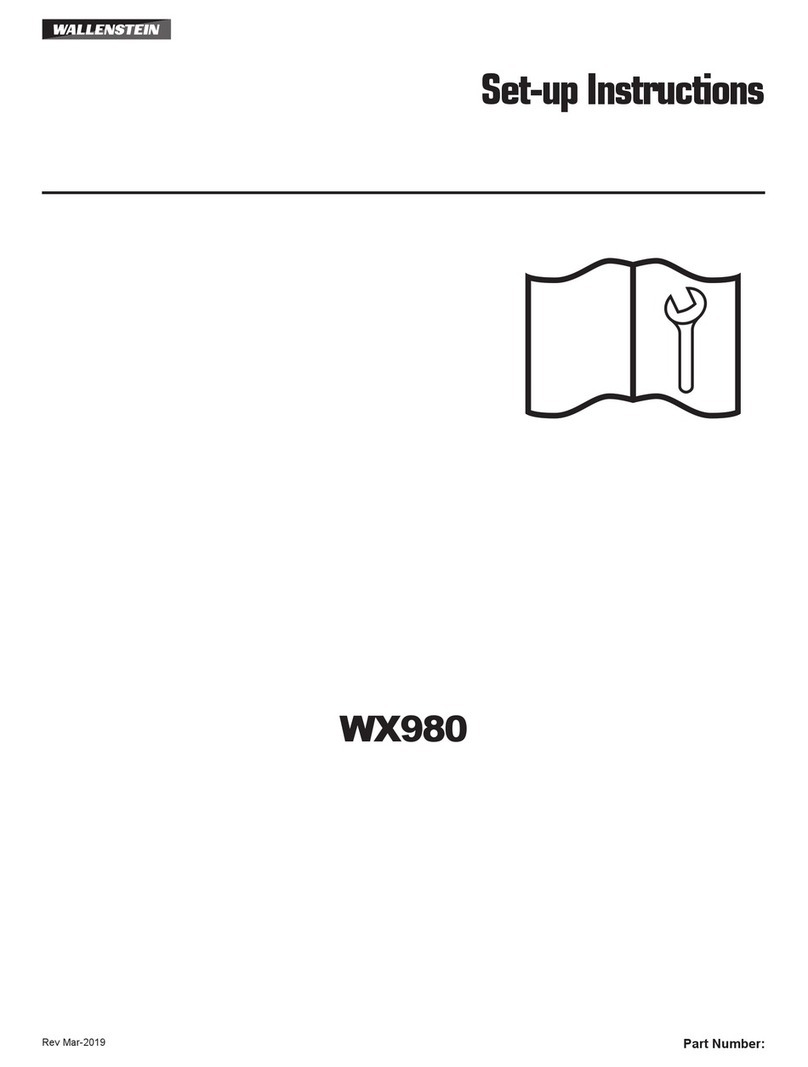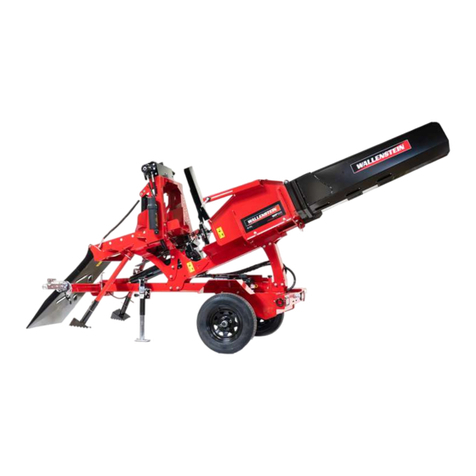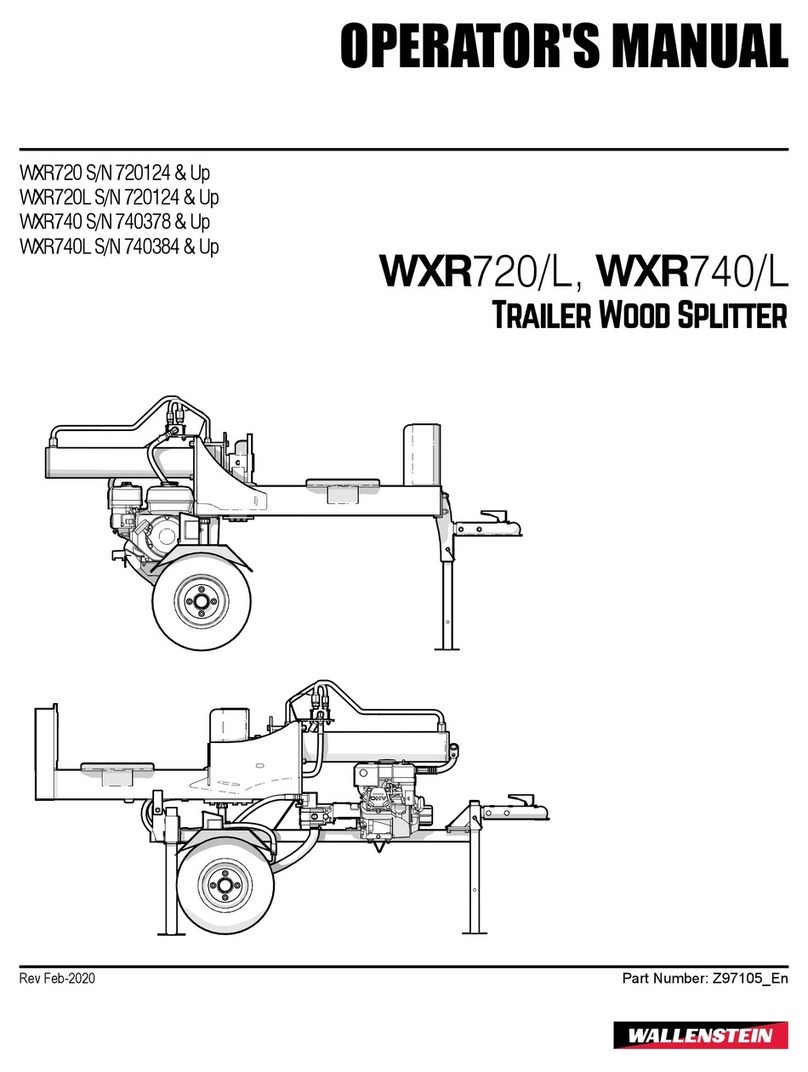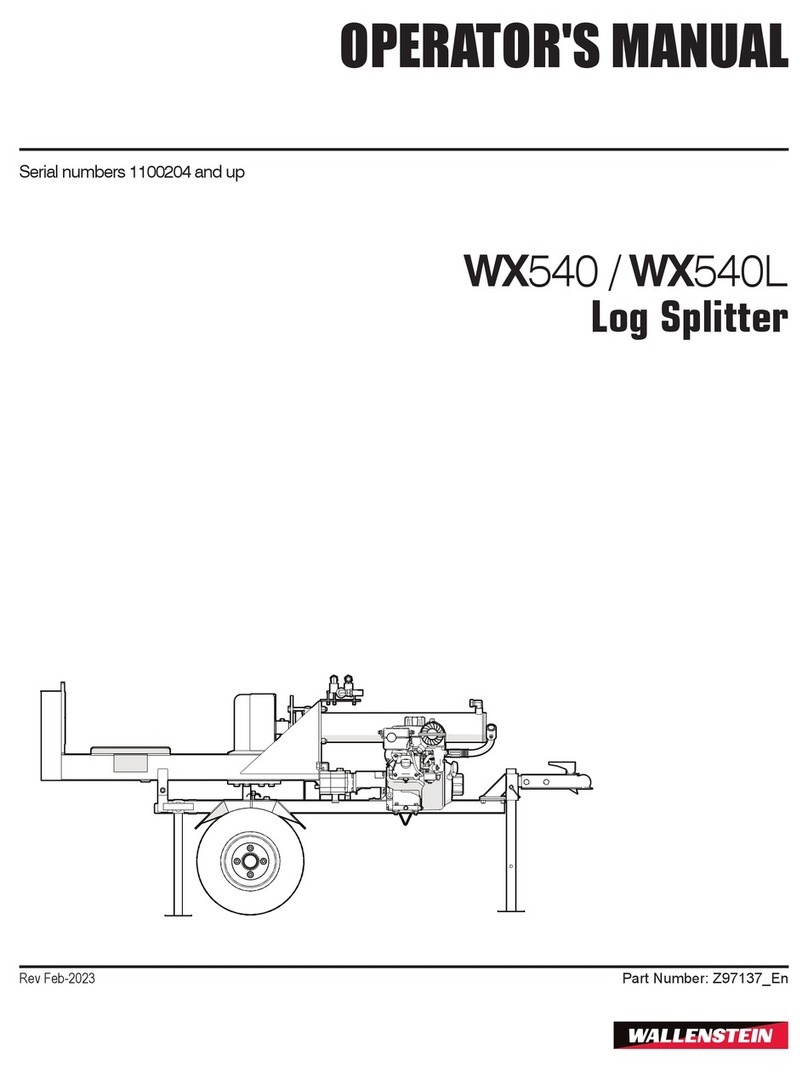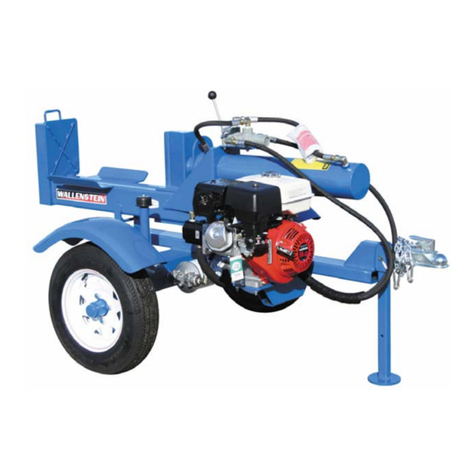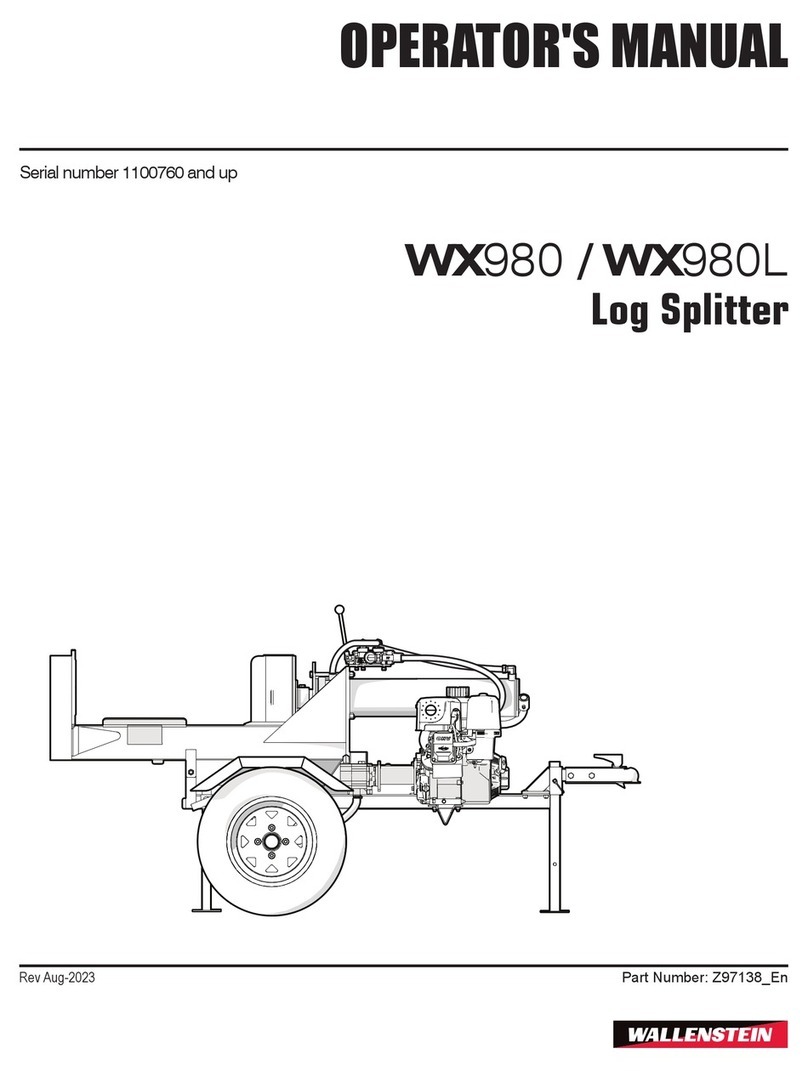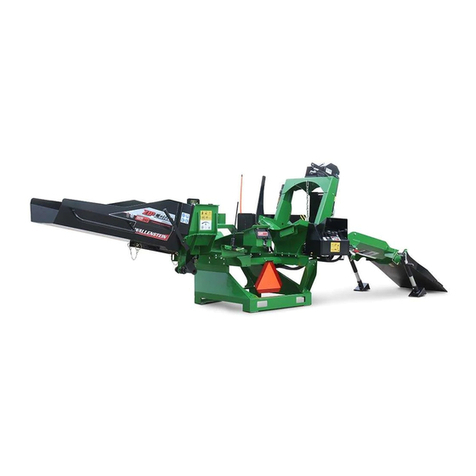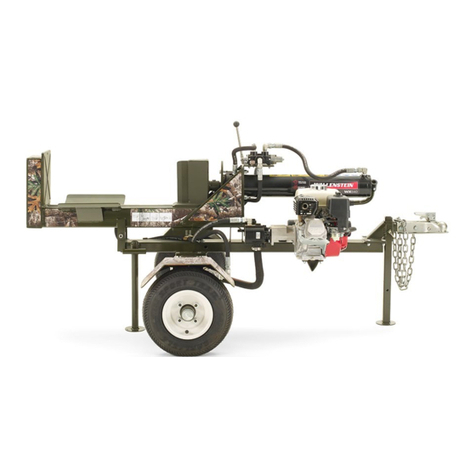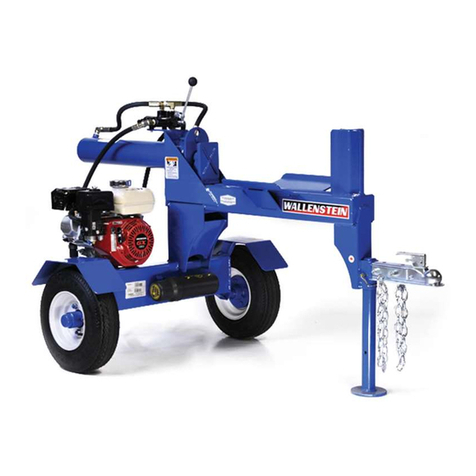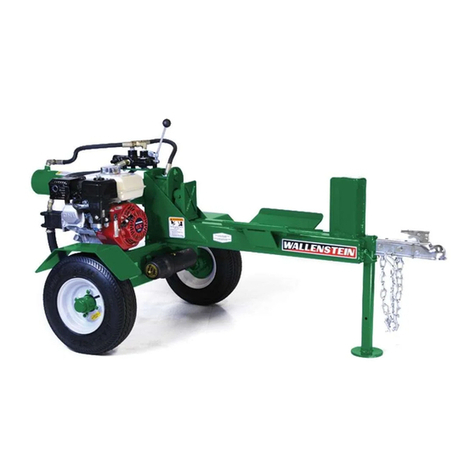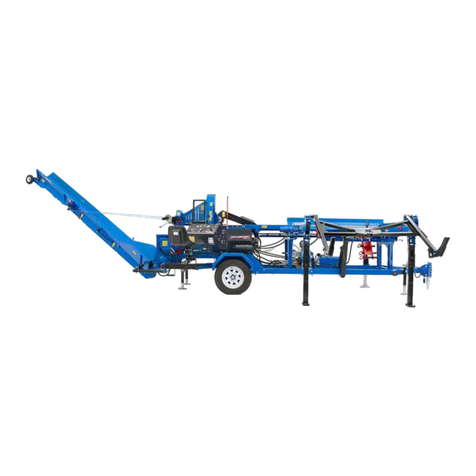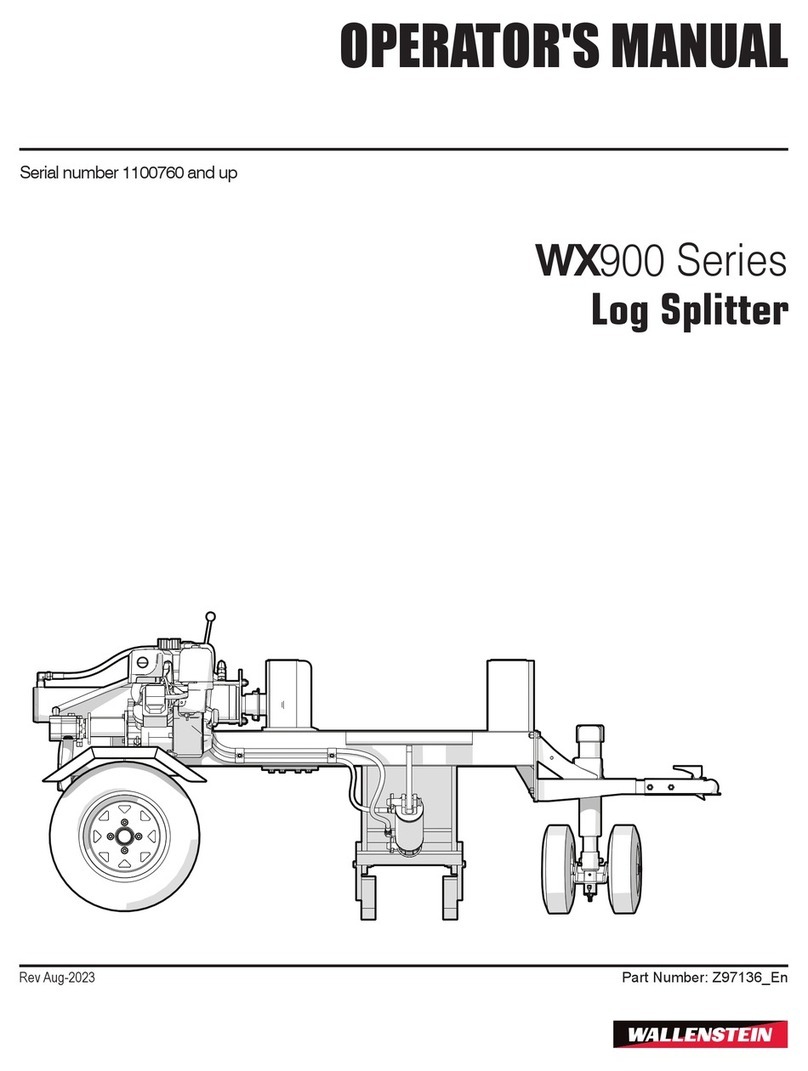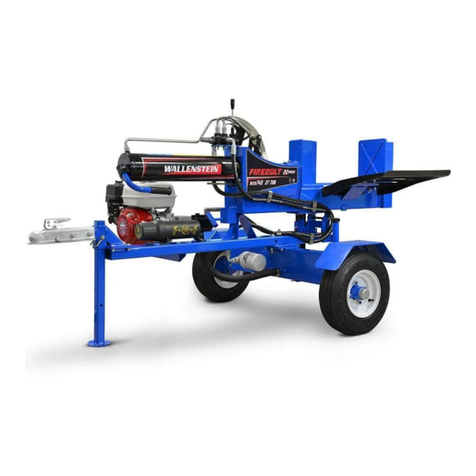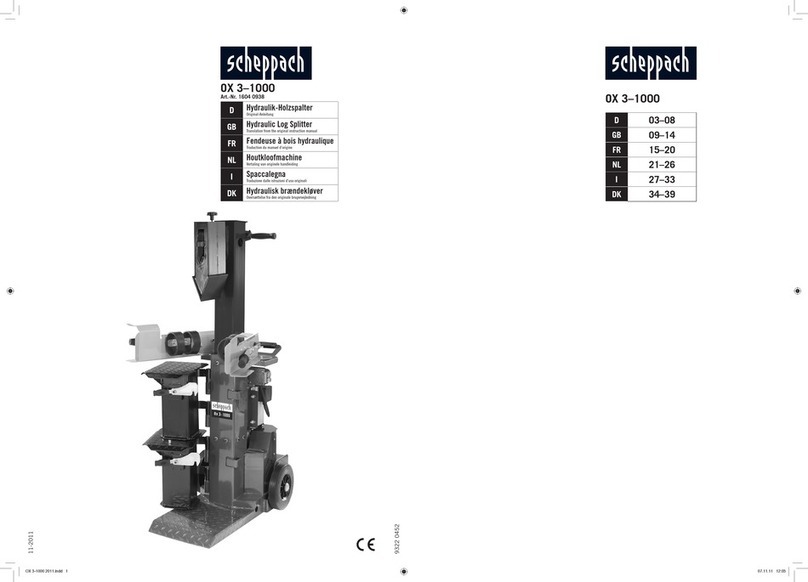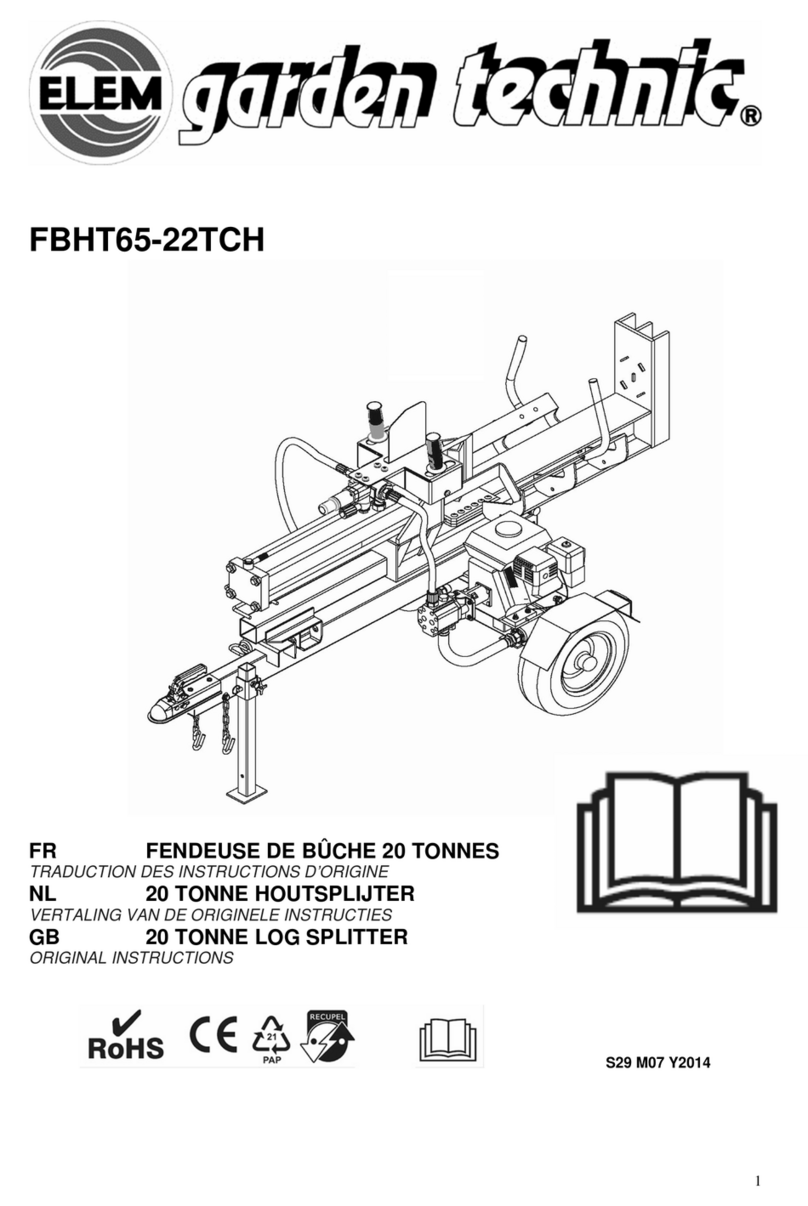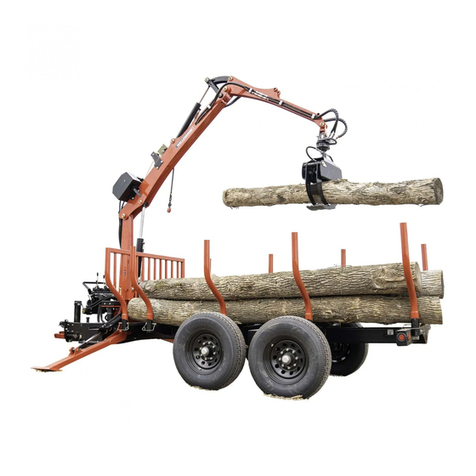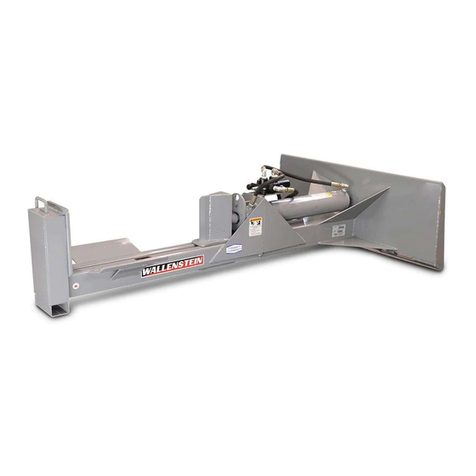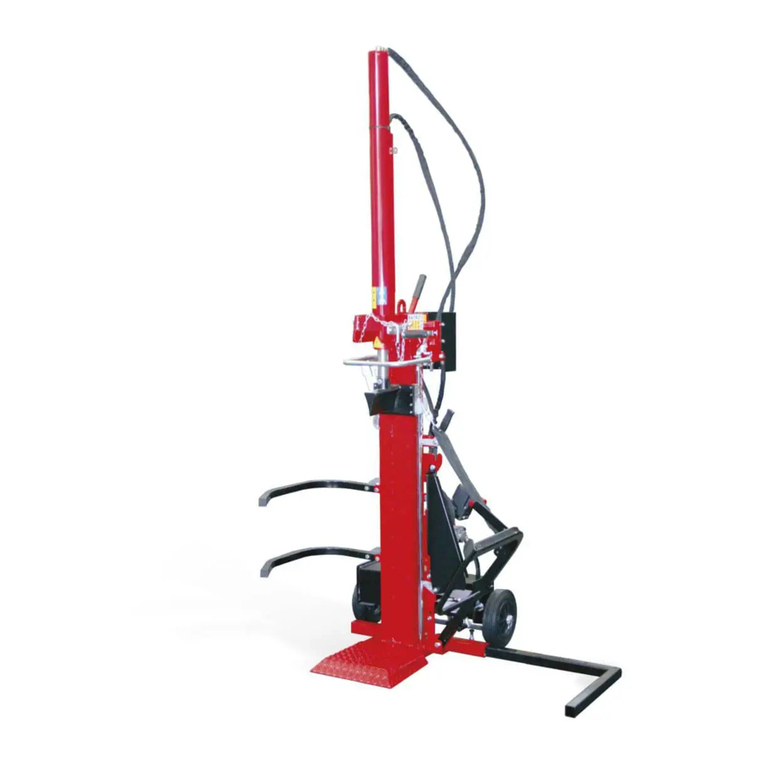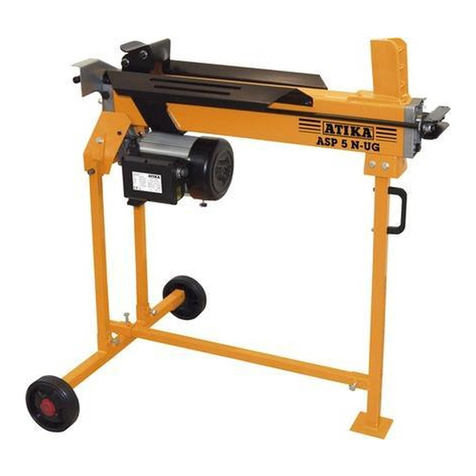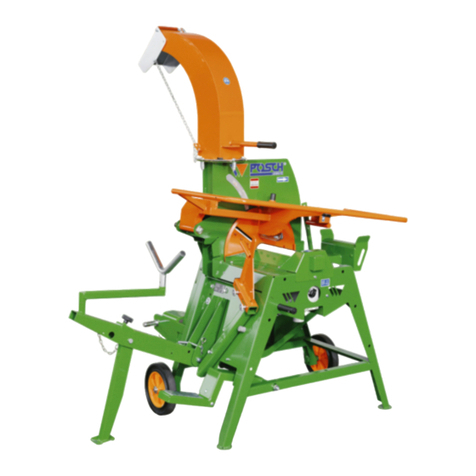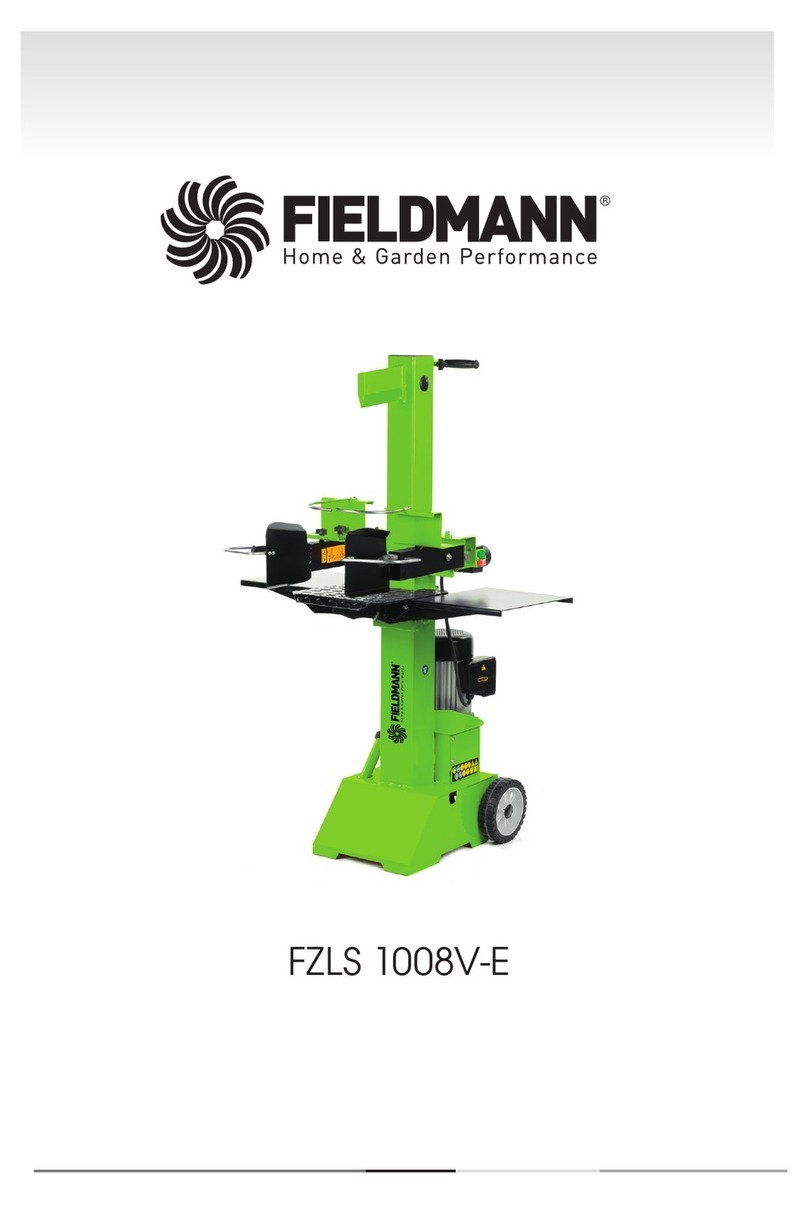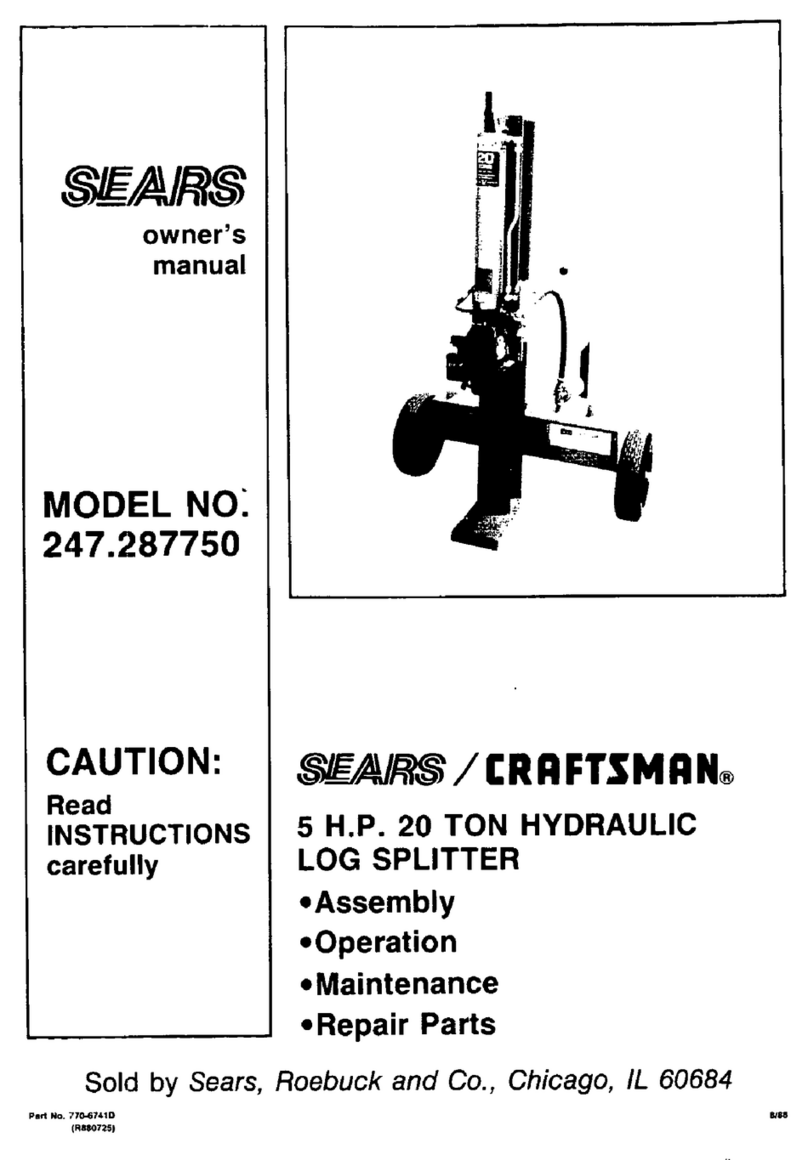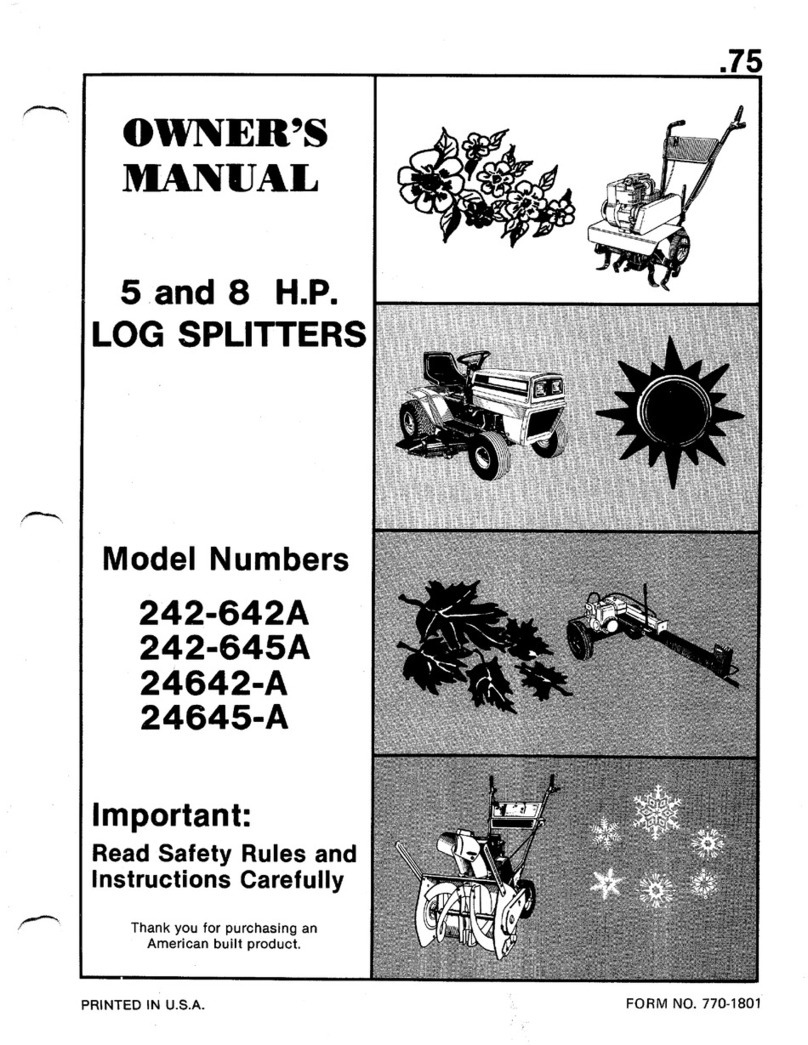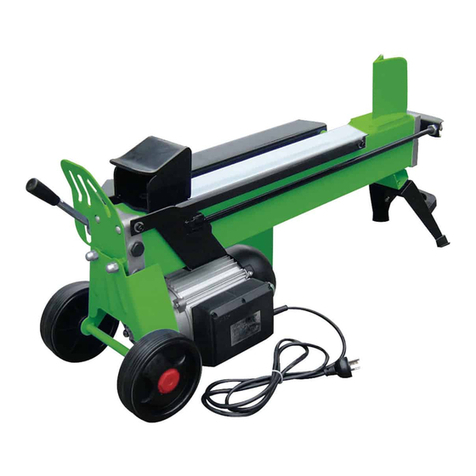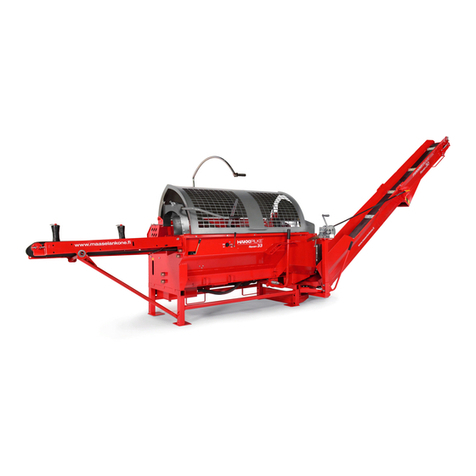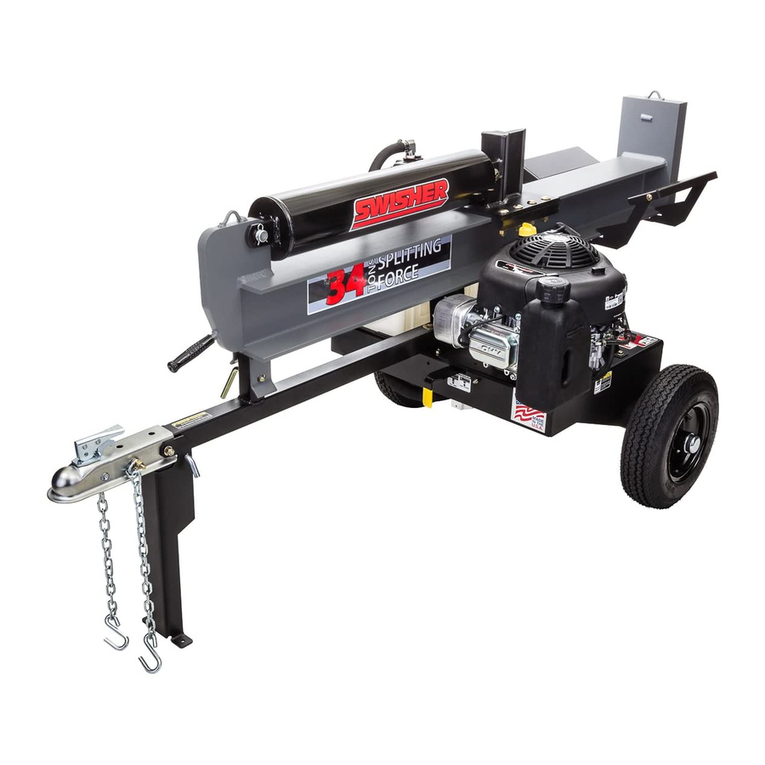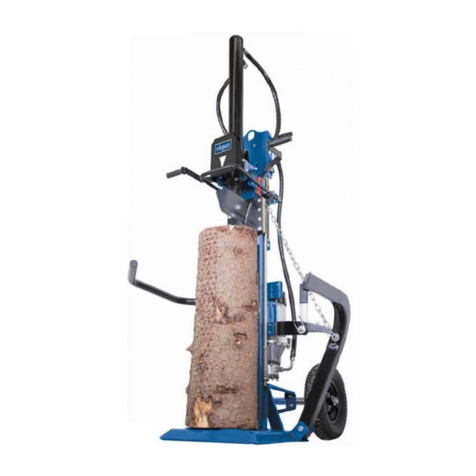
2.5 Equipment Safety Guidelines
The safety of the operator and bystanders is one of the main
concerns in designing and developing equipment. However,
every year many accidents occur which could have been
avoided by a few seconds of thought and a more careful
approach to handling equipment.
• Replace any safety sign or instruction sign that is not
readable or is missing. Location of such safety signs is
indicated in this manual.
• Never allow young children to work with this equipment.
Do not allow persons to use this unit until they have read
this manual and have developed a thorough understanding
of the safety precautions and of how it works. Review the
safety instructions with all users annually.
• Never exceed the limitations of the machine. If its ability to
do the job, or to do it safely is in question–STOP!
2.5.1 Hydraulic System Safety
• Make sure that all the components in the hydraulic system
are kept clean and in good condition.
• Make sure all components are tight, and that lines, hoses
and couplings are not damaged before applying pressure to
the system.
• Do not use a hand to check for hydraulic
oil leaks. Hydraulic fluid escaping under
pressure can penetrate the skin causing
serious injury. Use a piece of cardboard.
• Wear proper hand and eye protection
when searching for a high-pressure
hydraulic leak.
• Seek medical attention immediately if injured by a
concentrated high-pressure stream of hydraulic fluid.
Serious infection or toxic reaction can develop from
hydraulic fluid piercing the skin surface.
• Do not attempt any makeshift repairs to the hydraulic lines,
fittings, or hoses by using tape, clamps, or cements. Doing
so can cause sudden failure and create a hazardous and
unsafe condition.
• Relieve pressure on the hydraulic system before working
it. The hydraulic system operates under extremely high
pressure.
• Replace any hydraulic hose immediately that shows signs
of swelling, wear, leaks, or damage before it bursts.
• Do not bend or strike high-pressure lines, tubes, or hoses,
or reinstall them in a bent or damaged condition.
• Check to make sure hydraulic hoses are not worn or
damaged and are routed to avoid chafing.
• Never adjust a pressure relief valve or other pressure-
limiting device to a higher pressure than specified.
2.5.2 Refueling Safety
• Fuel is highly flammable. Handle with care.
• Stop the engine and allow it to cool for five minutes before
Refueling. Clean up spilled fuel before restarting engine.
• Do not refuel the machine while
smoking or when near open flame or
sparks.
• Fill fuel tank outdoors.
• Prevent fires by keeping machine clean of accumulated
trash, grease, and debris.
• Do not overfill the fuel tank. Fill until the fuel level is visible
1/2" (12 mm) below the filler neck to leave room for
expansion.
• If fuel is spilled, wipe it away carefully and wait until it has
dried before starting the engine.
• After refueling, make sure that the fuel cap is on securely to
prevent spillage.
2.5.3 Tire Safety
• Failure to follow proper procedures when mounting a tire on
a wheel or rim can produce an explosion which may result
in serious injury or death.
• Do not attempt to mount a tire unless you have the proper
equipment and experience to do the job.
• Have a qualified tire dealer or repair service perform
required tire maintenance.
• When replacing worn tires, make sure they meet the
original tire specifications.
2.5.4 Chain Saw Safety
A chain saw is inherently hazardous. Potential injuries can be
minimized by using proper personal protective equipment and
safe operating procedures.
Good cutting action results and chain life increases with correct
chain tension. If too loose, a chain can derail; if too tight a chain
can bind.
Proper chain lubrication prolongs the life of the saw and
increases safety.
Sharpen the saw if:
-The chain tends to track sideways while cutting.
-The cut shows fine powder instead of chips.
-There is a burnt wood smell.
Safety
WP845 / WP875
Trailer Firewood Processor
Safety
9
